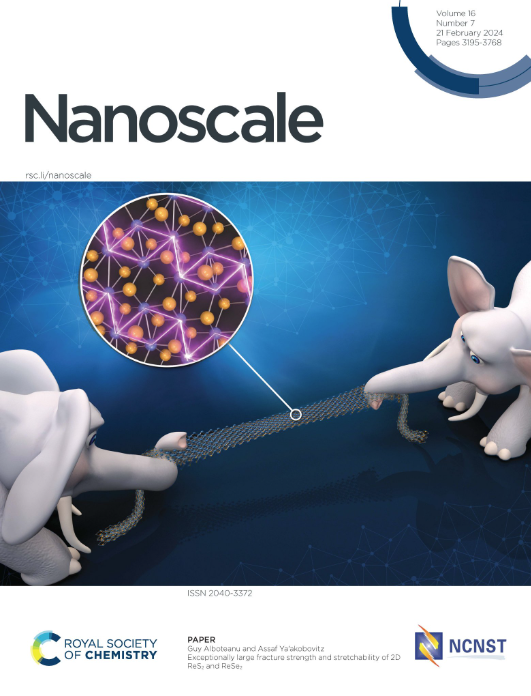二氧化钛纳米片增强聚氨酯的力学性能:实验与模拟
IF 5.8
3区 材料科学
Q1 CHEMISTRY, MULTIDISCIPLINARY
引用次数: 0
摘要
近年来,由于alb2型金属二硼化物具有制备准二维纳米结构的能力,引起了人们的广泛关注。二硼化钛(TiB2)是金属二硼化物家族的重要成员,以其优异的力学性能而闻名。然而,tib2基纳米片增强聚合物基体的候选性在很大程度上仍未被探索。在这项工作中,我们比较了三种TiB2增强材料-大块形式,原始纳米片和功能化纳米片,以探讨它们在聚氨酯(PU)机械增强中的应用前景。我们发现,虽然所有填料都能改善PU的机械性能,但由原始纳米片组成的复合材料表现出最显著的增强。原始纳米片的负载为2 wt.%,最终拉伸强度和韧性增加约80%。详细的分子动力学模拟表明,TiB2纳米片不仅能够有效地分配载荷,而且还能促进各向同性的力学行为,从而使复合材料具有刚性和强韧。这些见解补充了从氢键指数(HBI)和相分离度(DPS)推断。该研究证明了金属二硼化物衍生纳米片增强聚合物基体的丰富前景。本文章由计算机程序翻译,如有差异,请以英文原文为准。
Titanium Diboride-Derived Nanosheets Enhance the Mechanical Properties of Polyurethane: Experiments and Simulation
AlB2-type metal diborides have garnered significant attention in recent years owing to their ability to yield quasi-2D nanostructures. Titanium diboride (TiB2), a key member of the metal diboride family, is well known for its extraordinary mechanical properties. However, the candidacy of TiB2-based nanosheets to reinforce a polymer matrix has largely remained unexplored. In this work, we compare three kinds of TiB2 reinforcements – bulk form, pristine nanosheets, and functionalized nanosheets, for their prospects in the mechanical reinforcement of polyurethane (PU). We find that while all fillers lead to an improvement in the mechanical properties of PU, the composite comprising pristine nanosheets exhibits the most significant enhancement. A 2 wt.% loading of pristine nanosheets results in ~80% increase in ultimate tensile strength and toughness. Detailed molecular dynamics simulations reveal that the TiB2 nanosheets are not only able to distribute load effectively, but they also promote isotropic mechanical behaviour, which makes the composite stiff and strong. These insights are supplemented by inferences from the hydrogen bonding index (HBI) and degree of phase separation (DPS). This study exemplifies the rich prospects offered by the metal diboride-derived nanosheets for reinforcing polymer matrices.
求助全文
通过发布文献求助,成功后即可免费获取论文全文。
去求助
来源期刊

Nanoscale
CHEMISTRY, MULTIDISCIPLINARY-NANOSCIENCE & NANOTECHNOLOGY
CiteScore
12.10
自引率
3.00%
发文量
1628
审稿时长
1.6 months
期刊介绍:
Nanoscale is a high-impact international journal, publishing high-quality research across nanoscience and nanotechnology. Nanoscale publishes a full mix of research articles on experimental and theoretical work, including reviews, communications, and full papers.Highly interdisciplinary, this journal appeals to scientists, researchers and professionals interested in nanoscience and nanotechnology, quantum materials and quantum technology, including the areas of physics, chemistry, biology, medicine, materials, energy/environment, information technology, detection science, healthcare and drug discovery, and electronics.
 求助内容:
求助内容: 应助结果提醒方式:
应助结果提醒方式:


